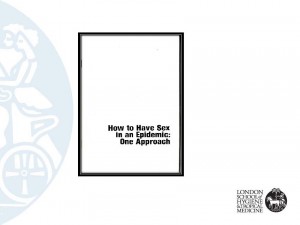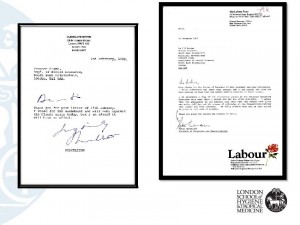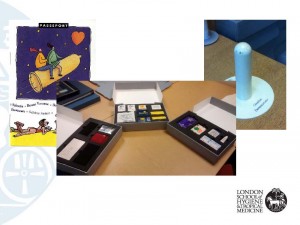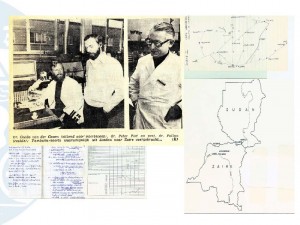1) ‘How to Have Sex in an Epidemic’, from the Joseph Sonnabend collection, 1983

This was the first safe sex manual produced in 1983. it was written by HIV/AIDS activists Michael Callen and Richard Berkowitz with scientific advise given by Dr Joseph Sonnabend. The book proved controversial with parts of the gay community as it opposed many aspects of sexual freedoms practiced at the time. The guide provides rational advise for safer sex for sexually active individuals, rather than condemning all physical contact or using medical language.
2) ‘Section 28 Correspondence’, from SIGMA Research collection, 1988-1994

Section 28 (or Clause 28) of the Local Government Act 1988 that would ban the promotion of homosexuality in schools. The motion was carried and not repealed until 2000. SIGMA Research openly lobbied members of Parliament against the amendment with a letter writing campaign. The archives contain responses from MPs such as Chris Smith, Tony Benn, Harriet Harman and Jenny Stringer.
3) UK HIV/AIDS Press Cuttings, from papers of Professor Kaye Wellings, 1983-1993

HIV/AIDS Press cuttings convey the media reaction to HIV/AIDS in the popular and medical press in the United Kingdom, 1983-1993. They were collected by the Health Education Authority and brought to the School by Kaye Wellings when she joined in 1993. Press cuttings are usually deposed of but this unique collection conveys the fear and misinformation about AIDS that was prevalent throughout the 1980s. The media reaction shaped the AIDS national public health campaign as it was necessary to inform and correct the misinformation on the disease that was prevalent in the press.
4) European HIV/AIDS prevention campaign ephemera, from Centre for Sexual and Reproductive Health collection, 1980s-1990s

As sexual transmission is the main route for passing on the infection, the archives holds an abundance of literature, images and actual artefacts relating to these prophylactics. Some of them have interesting back stories such as Mate’s condoms produced by Virgin in the UK in the 1980s partially down to the treat of AIDS. Or the Brazilian condom using locally resourced rubber.
5) European HIV/AIDS prevention posters, from Centre for Sexual and Reproductive Health collection, 1980s-1990s

AIDS public education posters were one of the most frequently used formats for the AIDS prevention mass media campaigns in the 1980s-1990s. The posters provided a medium of high exposure advertising and reached a broader spectrum of the targeted population. The posters were collected as part of the European Community programme, entitled ‘Concerted Action on Assessment of AIDS/HIV Prevention Strategies’ (1989-1991) and include posters from twenty different countries including Austria, Belgium, France, Germany and the United Kingdom. The archive contains over 700 posters as well as contextual information regarding their intended use and key messages. The posters were mainly aimed at the general population in response to the fear of a mass-heterosexual outbreak. The message within these posters was to raise awareness of the disease and change attitudes and behaviours often through the use of emotive language and images.
6) Papers relating to the first Ebola (Zaire outbreak), from the papers of Peter Piot, 1976-2012

Peter Piot in 1976 was part of the team that first isolated the Ebola Virus. He subsequently joined the WHO Expedition to the Yambuku, DRC to investigate the disease. The archives holds 3 boxes of his fieldwork notes and reports from the period. Due to the 2014 epidemic, this series has become increasingly sort after not only from the press but also modern day epidemiologists looking to find information useful to the current epidemic.




